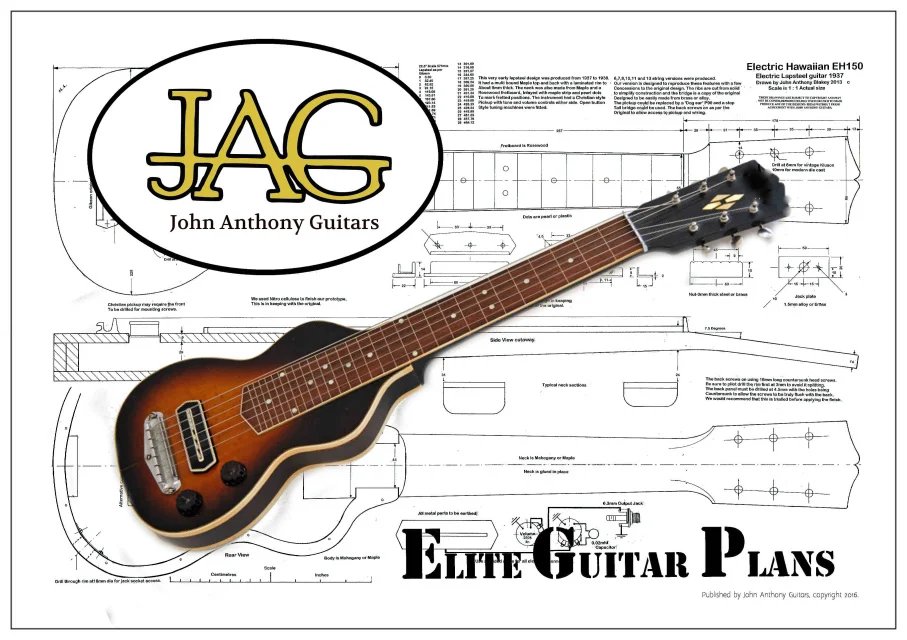Chapter 3: Design and Plans
In this post I want to talk about the design of a guitar and using a blueprint to make templates. Templates allow you a cost effective way to A.)Perfect the shape of your instrument without wasting material, and B.) Make a reference for repeated shapes that will be consistent.
First lets start with the plans.
For my guitar I decided to build a lap steel guitar:
The lap steel guitar is a type of steel guitar which is typically played with the instrument in a horizontal position on the performer's lap or otherwise supported. The performer changes pitch by pressing a metal or glass bar against the strings as opposed to a traditional guitar where the performer's fingertips press the strings against frets. The bar placed against the strings is called a "steel" or "tone bar".
I decided on a lap steel for a few reasons. First its smaller than a normal electric guitar, which meant that it was a better instrument to learn the techniques on. I could save on materials and components while still understanding the proper methods of construction.
Additionally, my goal is to be able to sell these instruments down the road. Unfortunately, the electric guitar market is over saturated. Every builder- amateur and professional alike- is building Les Pauls, Strats, and Teles. You simply can’t differentiate enough to stand out. So I decided to go a different route and focus on a niche market. There aren’t as many builders focusing on lap steels, even though the instrument is widely used.
With all of this in mind, I was able to find some great plans for a vintage instrument: A 1937 Gibson EH-150.
I found this design from a company in the UK called John Anthony Guitars. Unfortunately, the designer passed away but his wife Sandra is continuing to sell plans to guitar makers.
I chose this design for its shape which I found to be much more appealing than some of the slab style lap steel bodies that are sold today. I also liked that I could customize it to my own specifications. The plan is detailed enough that I can make modifications to the body cavity, head stock, bridge, and pickup cavity while still maintaining its overall look.
It also gave me the opportunity to learn some woodworking joinery techniques.
The biggest challenge is that all measurements are metric, which means I have to convert everything to imperial units to work with my tools accurately.
But first, we have to build some templates. In the next post, I will show you how I do that.
